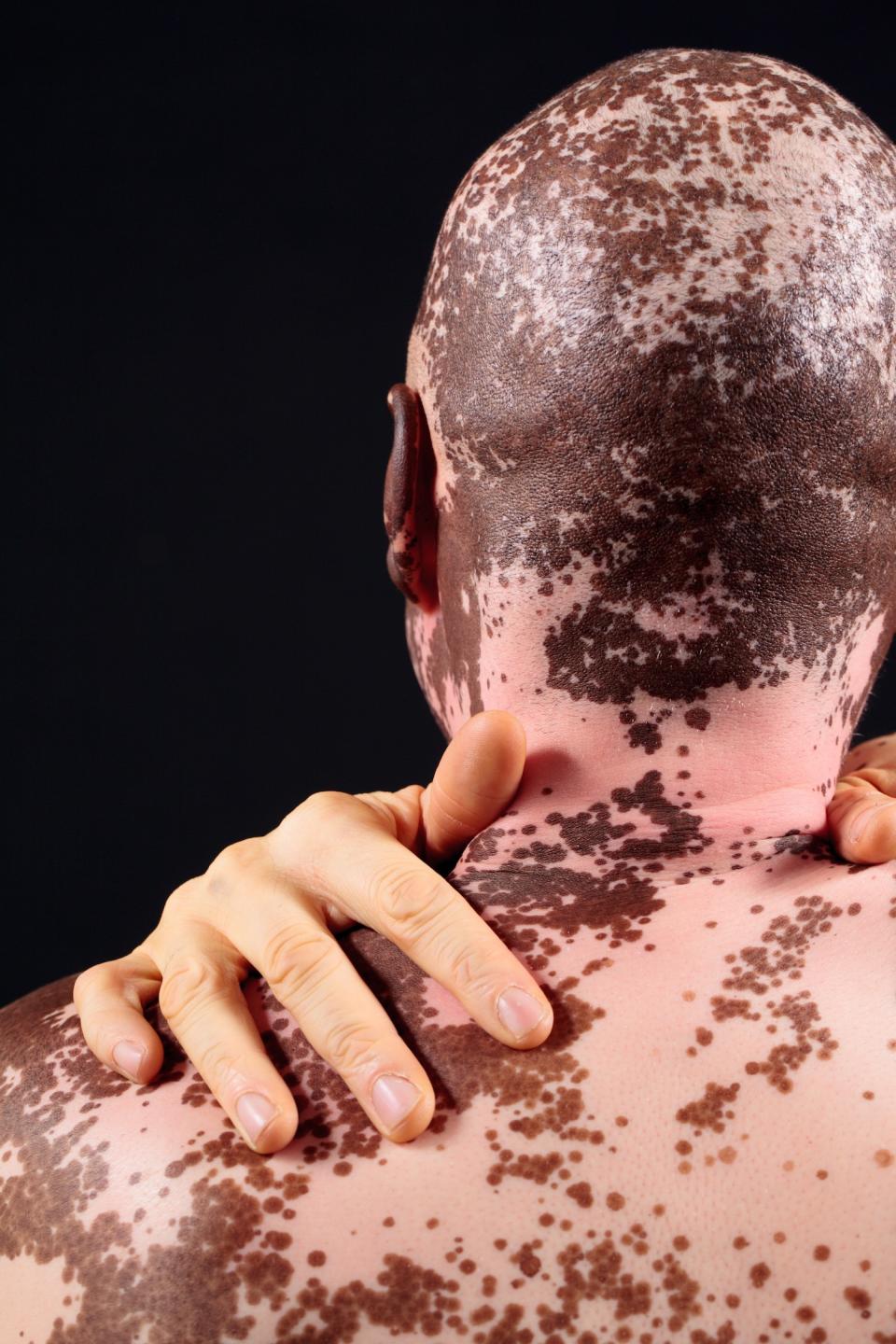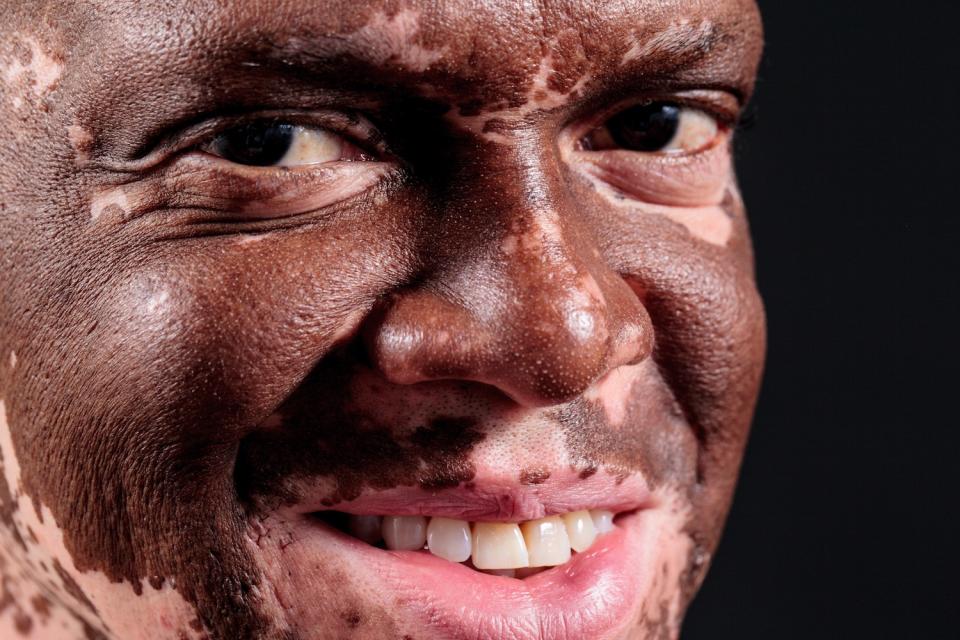On-camera TV reporter opens up about having vitiligo: 'Let people stare'
Imagine working in television as on-camera talent for most of your career — and suddenly, your look begins to unexpectedly change. While it may be difficult to imagine, this was reality for entertainment anchor and reporter Lee Thomas when he was diagnosed with vitiligo. For some, it may have been discouraging, but for him, it was the beginning of an inspiring journey.
Vitiligo is a chronic skin condition that causes skin to lose its pigmentation. According to the National Vitiligo Foundation Inc., this happens when pigment cells are destroyed and can no longer be produced. It affects about one percent of the population worldwide, and roughly five million people in the U.S.
When Thomas was about 25 and working for New York’s ABC television station, he noticed small, light spots — on his nose, near the corner of his mouth, and on his head. Back then, he wore a small Afro that made the spots less noticeable. “I got diagnosed here, and it was a devastating thing,” Thomas tells Yahoo Lifestyle. “Over the course of the first 10 years, it didn’t progress as much as it did the second 10 years. At one point, my face was completely white.”

Thomas didn’t allow vitiligo to stop the trajectory of his career, and eventually went on to work as an entertainment anchor and reporter at WJBK Fox 2 in Detroit, where he works now. Reflecting on his early days in Detroit, he says, “Nobody knew I had vitiligo. I covered it for the first five years I was there.”
He adds, “It’s a very vain society. We’re all worried about the way we look and the way we’re presented to people, but also, getting in television — it’s just a vain business. It’s based on looks a lot of the time. That’s what I thought I had to do to survive. It’s what most people do in life — hide imperfections.”
After masking his vitiligo with makeup for years, he finally stopped — sharing that once his hands started to change, enough was enough. “You can’t put makeup on your hands and then scratch the amount of places you’re scratching a day; I’d have brown stuff everywhere. I’d rather people think I have a disease that they can research and understand rather than to think I was dirty.”
Thomas revealed his true skin nearly a decade ago, and he began to share his personal journey. It also led him to write his 2007 bestselling memoir, Turning White: A Memoir of Change. After awkward encounters with makeup artists who weren’t exactly sure how to best even out Thomas’s skin, he often opted to apply different foundations and concealers himself. The 50-year-old TV reporter says he doesn’t do it because he is ashamed, but rather because in the line of work he does, the spotlight can’t always be on him and he doesn’t want to come off as “distracting.”
“I still do put it [makeup] on my face just to do the job, and especially because I do a lot of celebrity interviews,” says Thomas. “I’ve actually had some sit down with me and say things like, ‘What’s up with your face?'” In most interviews, Thomas gets about no more than 10 minutes to interview someone, so he chooses to cover up his vitiligo to keep the focus on his subjects, not him.
Celebrities are not the only ones who have been puzzled by Thomas’s vitiligo. There have also been instances off-camera — he reveals there have been times when people didn’t want to shake his hand or moved to the opposite side of an elevator. However, none of these actions shook him. “I’m cool with that,” he said. “It’s part of my advocacy. Let people stare; maybe they’ll seek out the information. Maybe they’ll ask me. Either way, staring is fine. Plus, I’m a reporter on TV. I want people to stare at me. So, there you go.”

While everyone may not be ready to accept individuals with vitiligo, Thomas agrees that the world is changing thanks to models like Winnie Harlow and other people showing their unretouched vitiligo. “As I go towards the end of my career, approaching into retirement, maybe it’s time for me to start doing the same,” he says.
“The older I get, the more I feel like there’s a confluence of events that happened to me to put me in this position,” Thomas explains. “I have this disease; it’s very unique — and especially unique to skin of color. It’s so drastically different. I have the ability to have a small platform, but even more than that, I know how to communicate. It’s what I was taught to do, but I innately do it anyway. I talk a lot. Because I’m in this position, I think this is where my next thing is supposed to be. It’s supposed to be about sharing and helping, and hopefully leaving the planet a little better for everybody else who comes along with vitiligo.”
Read more from Yahoo Lifestyle:
This Winnie Harlow-inspired doll with vitiligo is taking over social media
Winnie Harlow shares revealing selfie to celebrate unique beauty
How a Woman With Vitiligo Changed This Makeup Artist’s Outlook on Life
Follow us on Instagram, Facebook, and Twitter for nonstop inspiration delivered fresh to your feed, every day.

